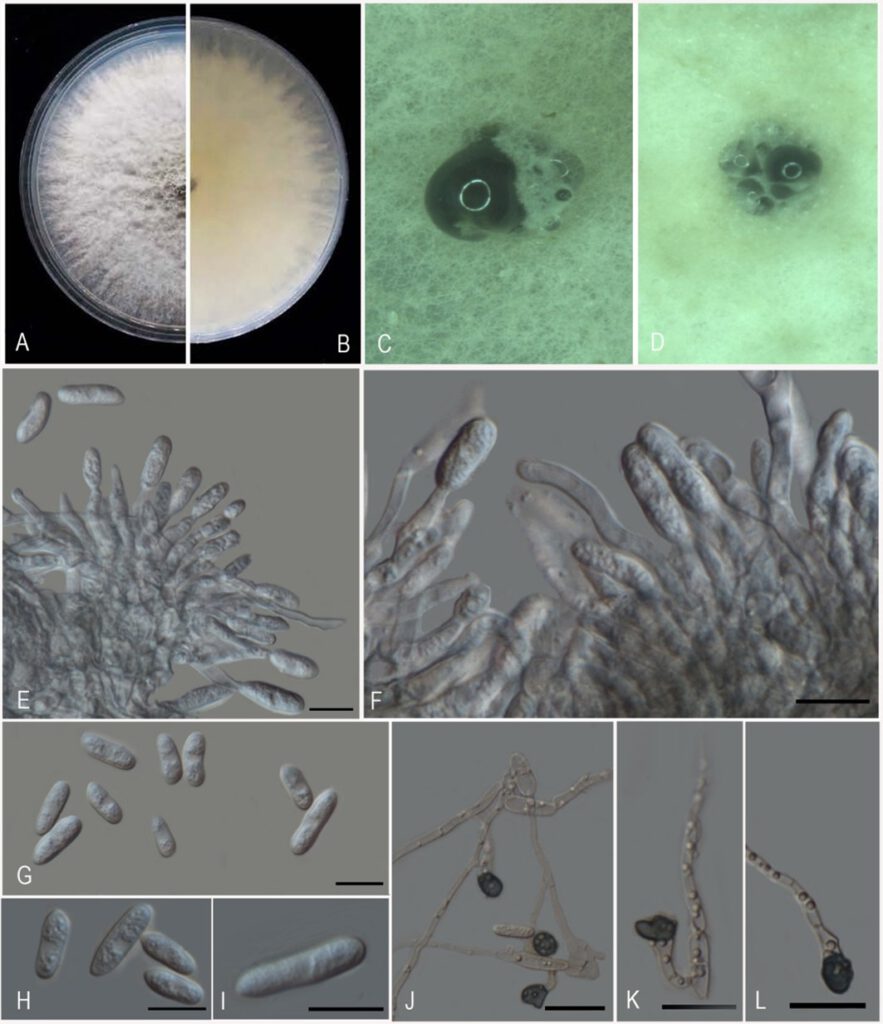Colletotrichum asianum Prihast., L. Cai & K.D. Hyde, in Prihastuti, Cai, Chen, McKenzie & Hyde, Fungal Diversity 39: 96 (2009)
MycoBank number: MB 515408; Index Fungorum number: IF 515408; Facesoffungi number: FoF 10689;
Endophytic on C. grandis cv ‘Tomentosa’ twigs. Sexual morph: not observed. Asexual morph on PDA: Conidiomata is slightly bulge, liquid and black. Conidiophores 20–40 × 2–5 μm (x̄= 26 × 3 μm, n= 50), cylindrical, undiaphragmed, unbranched, wide at the base, occurring in densely arranged clusters. Conidia 10–20 μm × 3–5 μm (x̄= 12 × 4 μm, n= 50), unicellular, hyaline, smooth-wall, slightly curved, cylindrical with obtuse ends (oblong) with slight narrowing at the center. Appressoria solitary or in loose groups, iron grey, oval to prototype and smooth edge.
Cultural characteristics. Colonies on PDA, reaching 70 mm diam. in seven days at 28℃, growth rate 10–11 mm/day (x̄= 10 mm, n=6), colonies irregular, margin undulate, flat, lavender grey mycelia, colony from above: grey, reverse buff.
Material examined. China, Guangdong province, Huazhou, isolated from healthy twigs of C. grandis cv ‘Tomentosa’, May 2019, YX Shu, (dried culture ZHKU 21-0084); living culture ZHKUCC 21-095).
Habit and host. Capsicum annuum, Coffea arabica, Malus domestica, Mangifera indica.
Known distribution. Australia, Brazli, China, Colombia, Ghana, India, Japan, Laos, Malaysia, Mexico, Panama, Philippines, South Africa, Sri Lanka, Taiwan, Thailand, Viet Nam

Morphological characteristics of Colletotrichum asianum (ZHKUCC 21-0095). A,B. Upper and reverse sides of cultures on PDA 7days after inoculation. C,D. Conidiomata. E,F. Conidiophores with developing conidia. G–I. Conidia on PDA. J–L. Appressoria. Scale bars: 10 μm (E–I); 20 μm (J–L).
